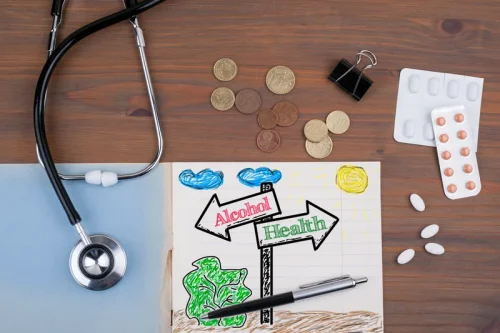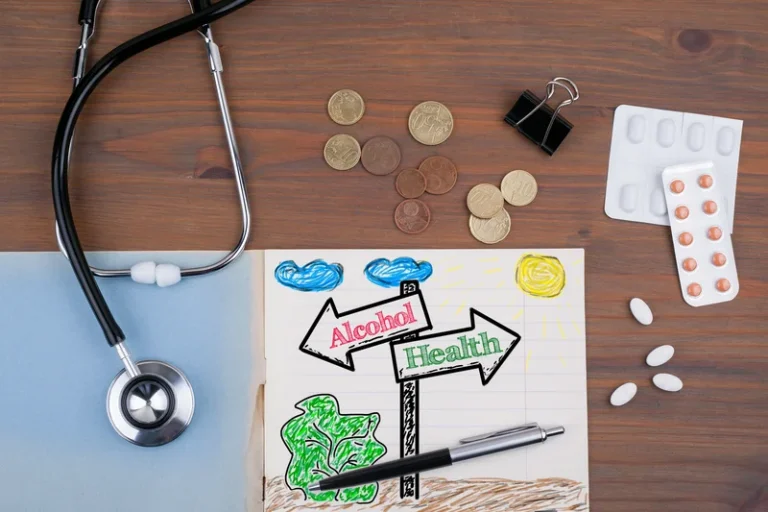Potential Adverse Effects of Amphetamine Treatment on Brain and Behavior: A Review PMC

A person can find it hard to stop taking a substance, which usually implies that they are physically dependent on the substance. There is no antidote for amphetamine toxicity; however, activated charcoal is an emergency treatment. In patients who can drink safely, the recommendation to administer activated charcoal, 1 to 2 g/kg up to 100 g by mouth if the ingestion occurred within the previous hour. There are no specific dosage adjustments provided in the manufacturer’s labeling for patients with renal or hepatic impairment and geriatric population, but dextroamphetamine/amphetamine should be used with caution https://ecosoberhouse.com/ and start at the low end of the dosage range. Both immediate-release tablets and extended-release capsules are appropriate for children 6 years of age and older.
Routes of administration and dosage

On average, this means an adult can expect half of an Adderall dose to leave the body within about 13 hours. If you or a loved one is addicted to amphetamines, you should consider seeking professional help. Contact us today to learn more about how we can help you achieve lasting half life of amphetamines recovery.
- Although some of these effects may reverse by stopping or reducing meth use, others are permanent.
- Fenproporex is degraded by one- and two-fold aromatic hydroxylation, followed by methylation and side-chain degradation by N-dealkylation to amphetamine via two partially overlapping processes.
- Our online health insurance verification system will estimate your in-network and out-of-network deductibles, coinsurance percentages and out-of-pocket maximums.
- This means it takes the body about 10 hours to metabolize and eliminate half of the ingested amount from the bloodstream.
EndeavorRx: An FDA approved video game and digital therapeutic

Treatment with either lithium or valproate reportedly protect against dextroamphetamine-induced alterations of brain choline concentration in patients with bipolar disorder 216. Recent studies in animals have produced evidence for neuroprotection against amphetamine-mediated toxicity by several substances, including nomifensine 217, methyllycaconitine 218, coenzyme Q10 219, baicalein 220 and melatonin 221. In addition, impairment of learned place preference consolidation by amphetamine-induced neurotoxicity was ameliorated by administration of a glutathione precursor 222.
- People can benefit from undergoing a detox program, where staff can monitor symptoms and mood as they withdraw from amphetamines and cleanse their bodies of these substances.
- These bacteria are known to produce toxic metabolites, including ammonium, indole, and P-cresol, through the degradation and fermentation of proteins 41.
- Starting 0.9% normal saline and monitoring creatine kinase (CK), electrolytes, and creatinine is the best way to manage rhabdomyolysis.
- Drugs metabolized to methamphetamine and/or amphetamine present significant concerns when interpreting amphetamine-positive drug testing results.
- According to the American College of Neuropsychopharmacology, the average amphetamine half life is hours.
Human studies- Negative consequences of chronic amphetamine use
- Overall, there is concern about risk for slowed growth in young patients who are dosed continuously, and for substance abuse in patients first medicated in late adolescence or adulthood.
- Since these medications are weak bases, their half-life decreases with alkalization and increases with acidification.
- Amphetamine-like compounds used in studies published between 2020 and 2023 to test their therapeutic potential in the treatment of ADHD.
- The evidence for neurotoxicity in rodents derives almost exclusively from studies utilizing very high parenterally administered doses of the drugs, typically administered in a “binge” pattern; i.e., four successive injections at 2-hr intervals 41, 42.
- In addition, since it is so powerful, even small amounts of meth can quickly result in physical dependence and addiction.
When people talk about amphetamines, they may be referring to an illicit amphetamine like meth or prescription stimulants like Adderall, Vyvanse or Dexedrine. Knowing the difference can help you better understand how long amphetamines stay in your system. Events in the early 1990’s likely influenced the utilization of amphetamine as a prescribed treatment. In 1991, the United States Federal Education Department began classifying ADHD as an educational disability in terms of the Individuals with Disabilities Education Act.
Benzphetamine (N-benzyl-N,-dimethylphenethylamine), a substituted sympathomimetic amine, contains a large N-benzyl that reduces excitatory qualities in the central nervous system (CNS) while keeping its anorexigenic capabilities. It causes a decrease in appetite by releasing dopamine from storage sites in the lateral hypothalamic feeding area. It is metabolized into dextroamphetamine and dextrometamphetamine, undergoing in vivo conversion to substances with high addiction and abuse potential 37. 1-(4-hydroxyphenyl)-2-(N-benzylamino)propane is the main metabolite produced, and its identification in urine samples is unique and characteristic of the use of benzphetamine 36. It is crucial to distinguish between these derivatives when using these drugs therapeutically or recreationally.
Amphetamine is most often administered twice daily in immediate-release formulations (Dexedrine, DextroStat, or Adderall IR tablets), or once a day in sustained-release formulations (Dexedrine or Adderal XR capsules, Vyvanse tablets). The therapeutic effects begin within 45−60 min after ingestion of an immediate-release tablet, with peak effect in 2 to 3 hours, and a total duration of 4−6 h. Effects peak about 4−7 h after ingestion of extended-release doses, and last about 12 h, depending on the endpoint and dose. Plasma profiles of d- and l- amphetamine are similar after a single dose of 20 mg Adderall XR or two 10-mg doses of Adderal IR, given 4 h apart.

Continuing Education Activity
The effects of amphetamines can last different time lengths depending on the drug used. For example, Adderall XR (extended-release) contains beads that slowly release the active ingredient over 8–12 hours. As noted earlier in this review, the usual “recreational” dose of MDMA or MDEA produces blood levels in the range of 100–250 ng/mL, or 100–250 μg (0.1–0.25 mg) per litre.

Evidence supports using large doses of benzodiazepines to treat amphetamine-overdose-related psychosis and agitation. In cases where agitation, delirium, and movement disorders are unresponsive to benzodiazepines, second-line therapies include antipsychotics such as ziprasidone or haloperidol, central alpha-adrenoreceptor agonists such as dexmedetomidine, or propofol can be administered. Neuromuscular paralysis, intubation, and active cooling measures may be necessary in severe cases. Starting 0.9% normal saline and monitoring creatine kinase (CK), electrolytes, and creatinine is the best way to manage rhabdomyolysis. Lastly, dextroamphetamine and phentermine have demonstrated efficacy in treating conditions such as cocaine and opioid dependence, ADHD, and obesity.
- Approximately 70% of a methamphetamine dose is eliminated within 24 h, along with small quantities of its metabolites, 4-hydroxymethamphetamine (15%) and amphetamine (10%).
- A careful history, physical exam, and cardiovascular evaluation should take place before initiating stimulant medication because serious cardiac problems can increase the risk of sudden death.
- Ingestion of acidic substances causes an accelerated excretion of d-amphetamine while alkaline agents (e,g., antacids) markedly increase both retention and absorption of amphetamines, sometimes resulting in dangerously high amphetamine levels.
- The medication in each product is absorbed differently by the body, so one amphetamine product cannot be substituted for another product.
- Most drugs are considered to have a negligible effect after four-to-five half-lives.
- If you or a loved one is ready to remove amphetamines from your system and overcome addiction to these drugs, The Recovery Village is here to help.
In one of the longest prospective studies, which included a no drug comparison, 370 ADHD children from 7.0 to 9.9 years of age, enrolled in the Multimodal Treatment Study of ADHD (MTA), were contrasted according to the use and continuity of stimulant treatment 69. Growth deficits in predicted height and weight were noted in continuously, but not inconsistently medicated patients. The deficits were maximal in the first year of stimulant use, decelerated over the second year, and were maintained after the third and final evaluated year of treatment for both height (2.0 cm less than predicted) and weight (2.7 kg less than predicted). Notably, findings from the MTA study did not support the idea that growth deficits rebound during continuous use of stimulant medication. Phentermine has been found to be an effective short-term treatment for obesity, according to research conducted by Márquez-Cruz et al. 72. Their study revealed that the 30 mg dosage of phentermine was more effective than the 15 mg dosage after a 12-week follow-up, although there was no significant difference at the 24-week mark.

Hypersensitivity to amphetamine or any component of the formulation, anaphylactic reactions and angioedema have been reported; use during or within 14 days following MAO inhibitor (including linezolid or intravenous methylene blue). Mixed amphetamine salts have also demonstrated efficacy in alleviating ADHD symptoms in adults, and further research is needed to explore their potential use in treating bipolar disorder and cocaine use disorder. Swerdlow et al. 68 examined the effects of amphetamine on auditory frequency modulation learning (auditory learning) in targeted cognitive training for schizophrenia 68. Amphetamine doses of 2.5–5 mg showed significant improvements in auditory learning, with maximal effects observed at 5 mg. Ross and Bockstaele 43 also emphasize the critical role of catecholaminergic systems in PTSD. The modulatory neurotransmitters dopamine and norepinephrine determine which memories are salient, commanding attention and influencing behavioral outcomes 43.


